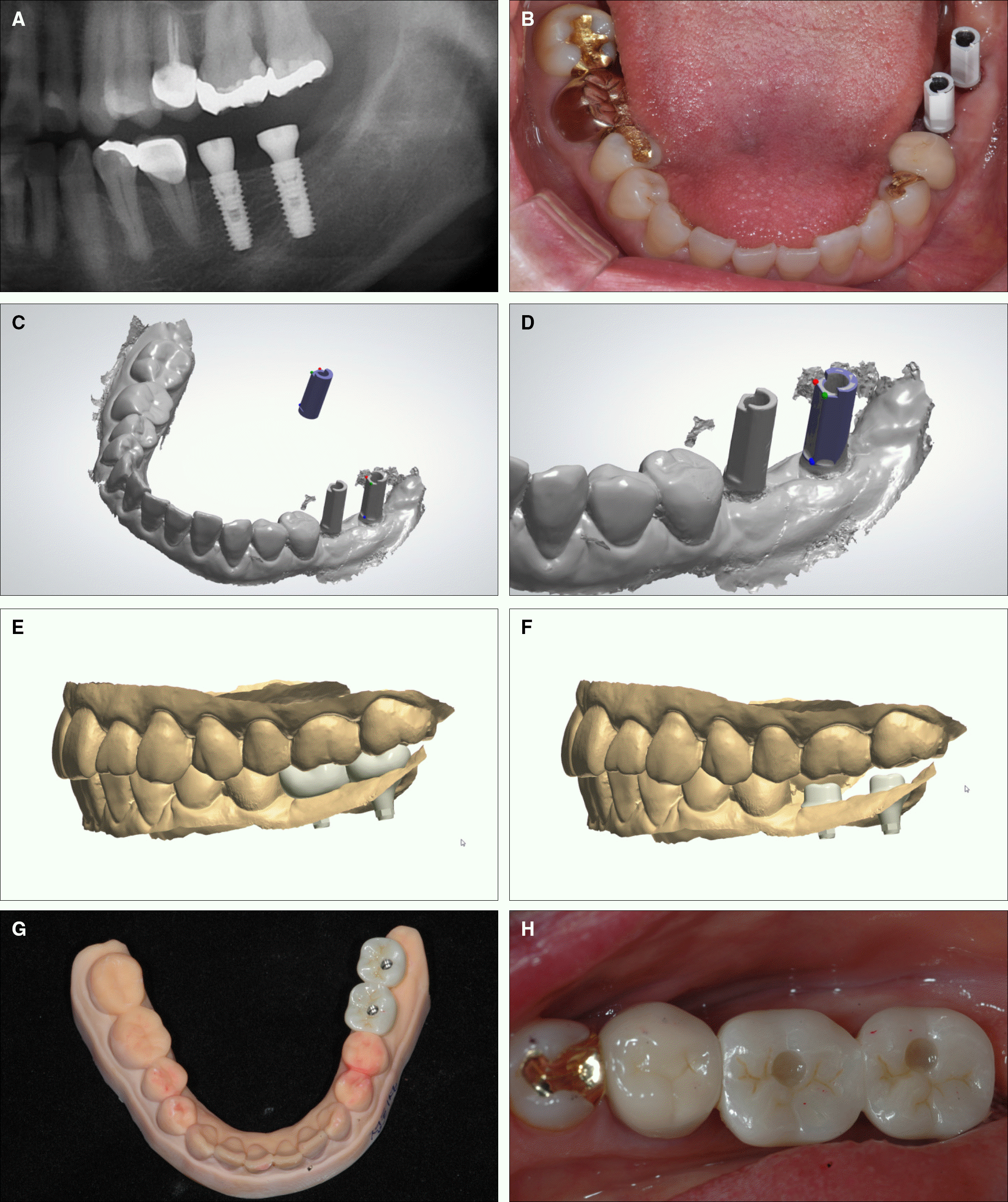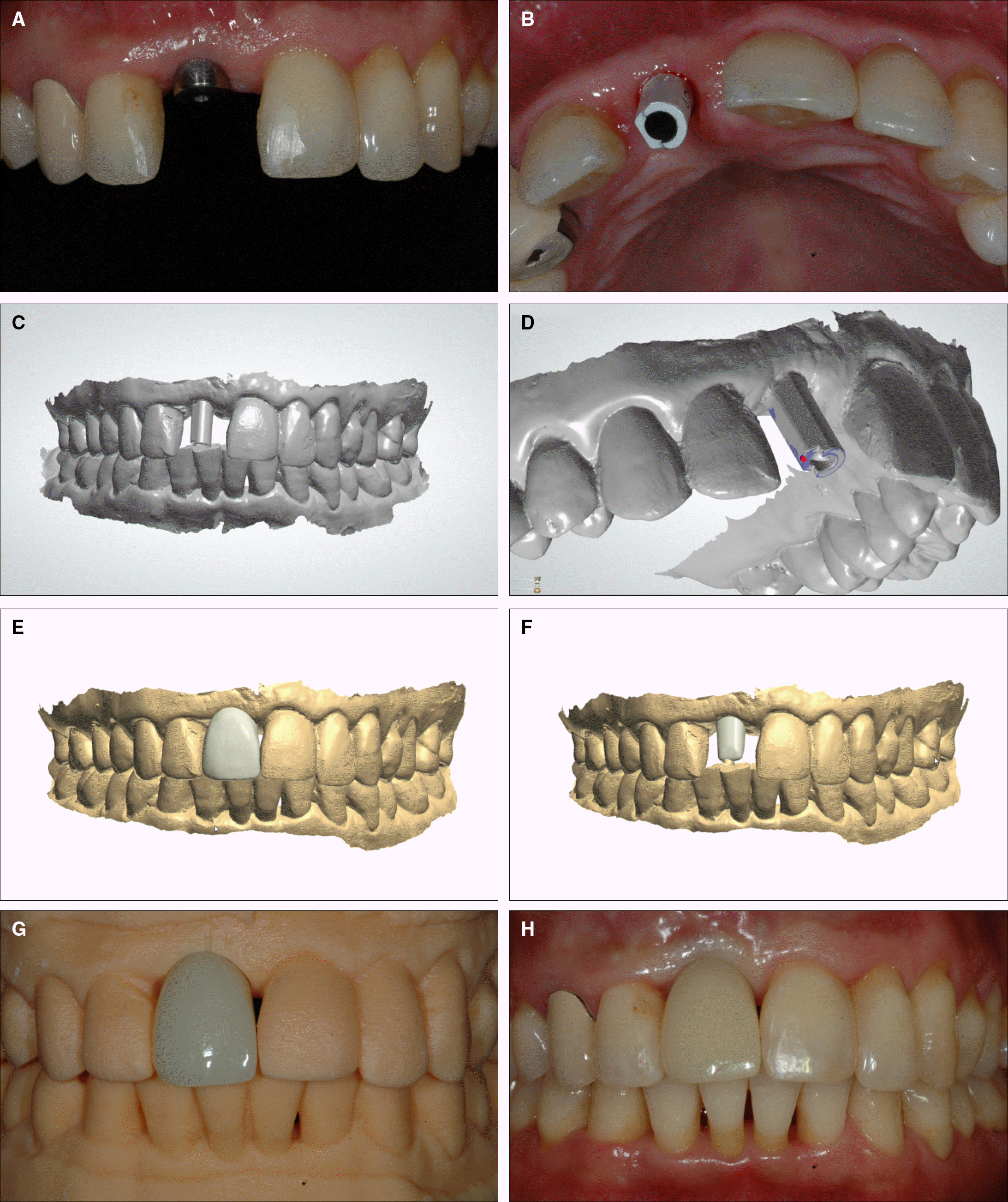Abstract
Accuracy is the most important thing in implant prosthesis, for this reason it is essential procedure to check the accuracy of impression taking. However, impression material has its own error and the error occurs in model-making procedure. As an alternative way to this, using intraoral scanner can be suggested and many studies were issued reporting that there’ s no statistically significant difference in accuracy between intraoral scanner and conventional impression. Therefore, the purpose of this study is to report the process of making of implant prosthesis using intraoral scanner, which is more convenient, fast, accurate compared with conventional method.
Go to : 
REFERENCES
1. Del' Acqua MA, Arioli-Filho JN, Compagnoni MA, Mollo Fde A Jr. Accuracy of impression and pouring techniques for an implant-supported prosthesis. Int J Oral Maxillofac Implants. 2008; 23:226–36.
2. Wee AG. Comparison of impression materials for direct multi-implant impressions. J Prosthet Dent. 2000; 83:323–31.

3. Del' Acqua MA, Cha ′ vez AM, Compagnoni MA, Molo Fde A Jr. Accuracy of impression techniques for an implant-supported prosthesis. Int J Oral Maxillofac Implants. 2010; 25:715–21.
4. Cho SH, Schaefer O, Thompson GA, Guentsch A. Comparison of accuracy and reproducibility of casts made by digital and conventional methods. J Prosthet Dent. 2015; 113:310–5.

5. Gü th JF, Keul C, Stimmelmayr M, Beuer F, Edelhoff D. Accuracy of digital models obtained by direct and indirect data capturing. Clin Oral Investig. 2013; 17:1201–8.
Go to : 
 | Fig. 1.Clinical pictures of case 1. (A) Intraoral radiographic view after implant surgery, (B) Scannable impression coping, (C) Intraoral scan image, (D) Matching the imaginary impression coping to the scan image, (E) Computer aided design of prosthesis, (F) Computer aided design of titanium abutment, (G) Polyurethane model made by 3D printer, (H) Definitive prosthesis. |
 | Fig. 2.Clinical pictures of case 2. (A) Intraoral view after implant surgery, (B) Scannable impression coping, (C) Intraoral scan image, (D) Matching the imaginary impression coping to the scan image, (E) Computer aided design of prosthesis, (F) Computer aided design of titanium abutment, (G) Polyurethane model made by 3D printer,(H) Definitive prosthesis. |




 PDF
PDF ePub
ePub Citation
Citation Print
Print


 XML Download
XML Download